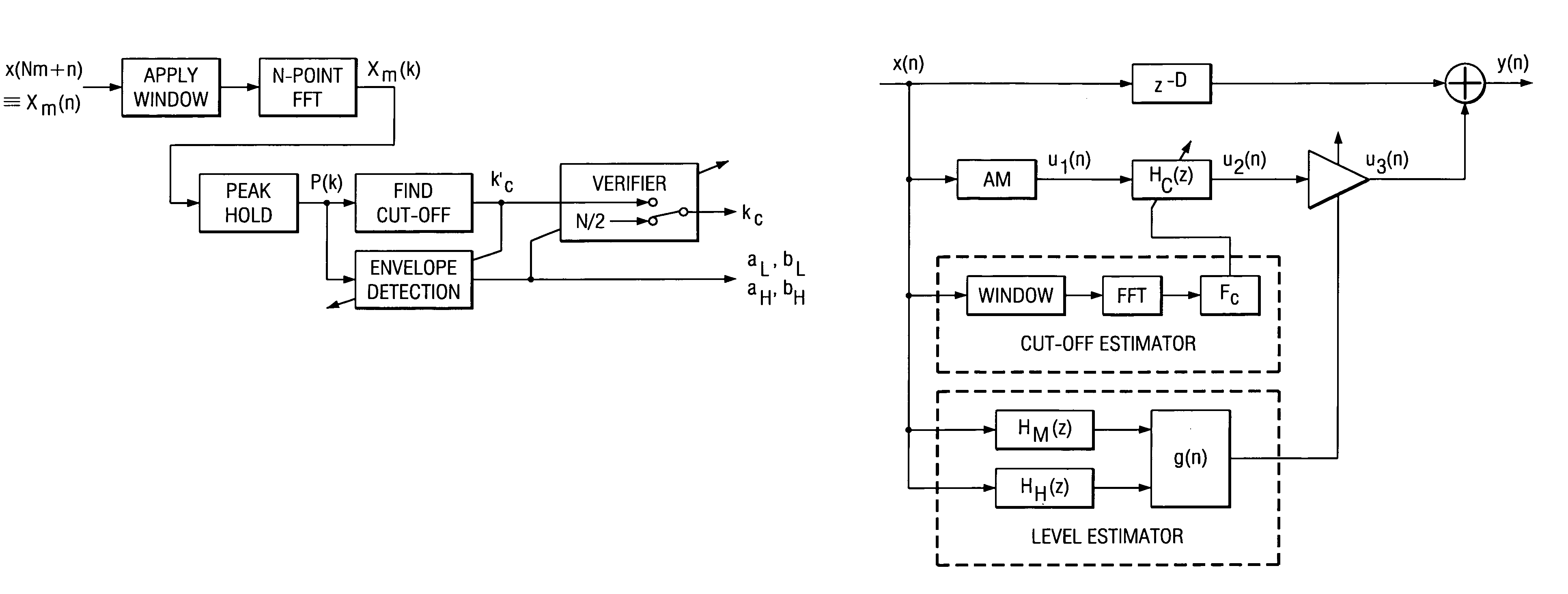Audio bandwidth expansion
a technology of audio frequency and expansion, applied in the field of digital signal processing, can solve the problems of time domain aliasing, perceptual distortion, and limited and achieve the effect of increasing the bandwidth of the audio frequency
- Summary
- Abstract
- Description
- Claims
- Application Information
AI Technical Summary
Benefits of technology
Problems solved by technology
Method used
Image
Examples
example values
are
KH1=kc′+N / 16, KH2=kc′+N / 8
With these values aH and bH can be computed by just switching L to H in the foregoing.
[0037]In the preferred embodiment method, the candidate cut-off frequency kc′ is verified as
[0038]kc=kc′if(bL-bH)>b=N / 2otherwise
where kc is the final estimation of the cut-off frequency, and b is a threshold. The condition indicates that there should be a drop-off larger than b (dB) at kc′ so that the candidate can be considered as the true cut-off frequency.
[0039]There are many other possible ways to verify the candidate cut-off frequency kc′ using aL, bL, aH and bH. Another simple example is
bL>>bH
This condition means that the offsets should be on the expected side of the threshold. Even more sophisticated and robust criteria may be considered using the slopes aL and aH.
5. BWE in Time Domain
[0040]FIG. 1g shows the block diagram of a preferred embodiment time domain BWE implementation. The system is similar to the preferred embodiment of sections 2 and 3 but w...
PUM
 Login to View More
Login to View More Abstract
Description
Claims
Application Information
 Login to View More
Login to View More - R&D
- Intellectual Property
- Life Sciences
- Materials
- Tech Scout
- Unparalleled Data Quality
- Higher Quality Content
- 60% Fewer Hallucinations
Browse by: Latest US Patents, China's latest patents, Technical Efficacy Thesaurus, Application Domain, Technology Topic, Popular Technical Reports.
© 2025 PatSnap. All rights reserved.Legal|Privacy policy|Modern Slavery Act Transparency Statement|Sitemap|About US| Contact US: help@patsnap.com



